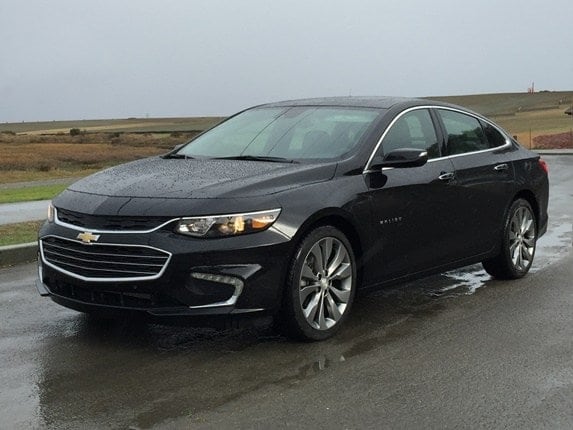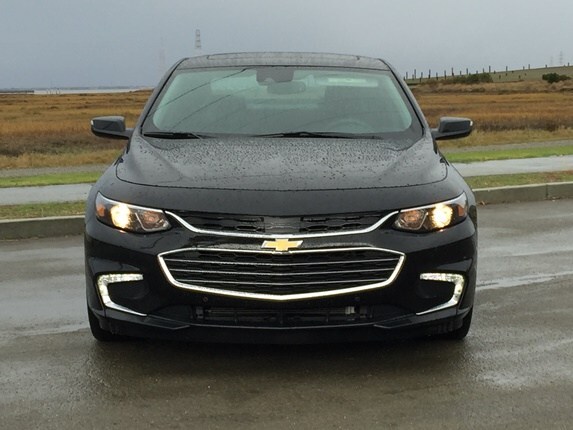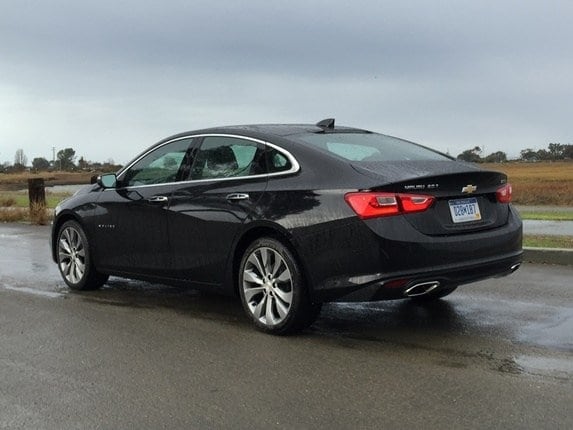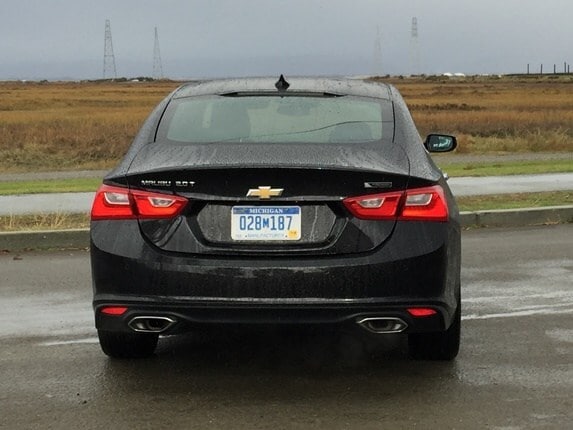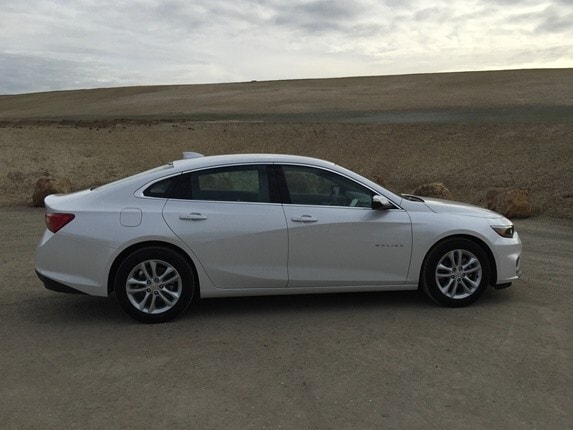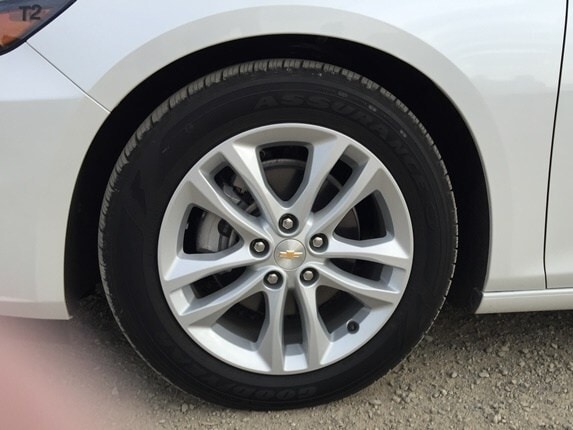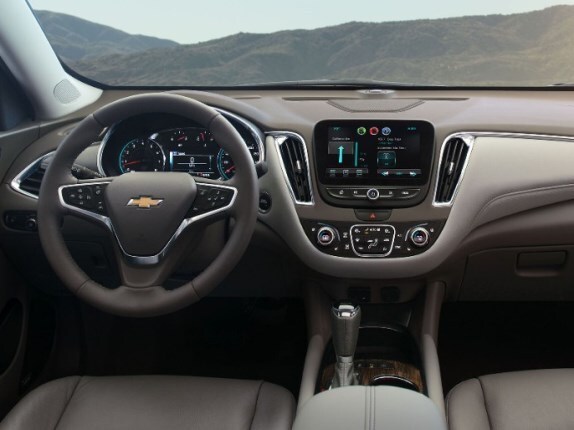Chevrolet‘s midsize Malibu improves with every new generation. The looks get better, the tech features are fresher and some of the best available, but previous models have suffered from some shortcomings, some of which may have kept the car from being one of the top sellers against rivals like Toyota Camry and Honda Accord and up-and-coming Hyundai Sonata and Kia Optima. To crack that code, GM absorbed customer input and the designers and engineers set goals for the 2016 Chevrolet Malibu.
Chevrolet’s team wanted to give the 2016 Malibu a compelling new look, and they succeeded. The new Malibu has some of the eye-catching lines of its big brother the Impala, and the result is the Malibu is now one of the best-looking midsize sedans.
Improved rear legroom
The interior is fresh and attractive, and very roomy, especially in the rear, which was lacking in the old car. This isn’t just the opinion of a group of small automotive journalists, either: if you look at KBB’s Consumer Reviews for the Chevy Malibu, you’ll find comments like "The ’13 Malibu is also not very comfortable, and the leg room for the back seats is minimal" or "My main sticking point with this car is the interior space, especially the rear seating," and "…anyone over 5’7" would have a hard time being comfortable in the backseat of the car." Now, there’s plenty of room to stretch out, whether you’re in the front or sitting in back. Features like MyLink with Android Auto and Apple CarPlay, navigation, wireless phone charging and the ability to make your car a wi-fi hotspot are welcome high-tech options.
Also: See the New and Redesigned Cars of 2016
Three Engine Choices
The newest Malibu is larger, but almost 300 pounds lighter. That weight loss made it possible to power the Malibu with smaller-displacement engines without feeling a significant loss of power. The smallest is a turbocharged 1.5-liter 4-cylinder with 160 horsepower and a 6-speed automatic transmission. This is the standard engine on the L, LS and 1LT. The 1.5-liter is surprisingly capable, although you can feel its limits when accelerating on a grade. But for the daily commute it is more than adequate — and it should get about 27 mpg in the city and 37 on the highway (estimated). Part of those good fuel economy numbers come from the start/stop feature which cannot be defeated or shut off.
The other gas engine, a turbocharged 2.0-liter 4-cylinder, puts out 250 horsepower. It uses a new 8-speed automatic transmission, and is standard in the 2LT and Premier trim levels. This is the engine that offers the best acceleration and response throughout the rpm band, and the transmission is well-paired with the engine. This combination feels like the best fit for the Malibu. The downside: fuel economy is an estimated 22 city, 33 highway, which isn’t bad but isn’t nearly as good as with the 1.5-liter. Whichever engine you choose, though, you’ll get a car with an easy, comfortable ride that’ll be a great road trip car.
Hybrid is a Strong Option
New for the Malibu — and for Chevy cars — is a strong hybrid. Chevrolet has offered light hybrids in cars (and the Malibu) in the past and strong hybrids in trucks and SUVs, but this is the first strong hybrid in any Chevy car. While the basic architecture of the hybrid system is similar to that of the Volt’s electric motor, there are many differences between the two. For example, the Volt can run at wide-open throttle on electric power and the Malibu hybrid can’t. But you never have to plug in the Malibu, and you can go over 50 mph on electric power alone.
If someone is interested in buying the hybrid version of a midsize sedan, odds are what they are looking for is better fuel economy without losing anything they like about midsize cars. We briefly drove a pre-production Malibu Hybrid and it does feel much like driving a regular midsize sedan, with some subtle differences. Acceleration was quite good: the engine at the heart of the system is a 1.8-liter 4-cylinder, supplemented by two electric motors and a 1.5kWh lithium-ion battery pack. Total power output is 182 horsepower. The two motors are a drive system that serves as the transmission. It’s similar to a continuously variable transmission, but offers one driving mode for high-acceleration, low-speed driving and the other for higher-speed, steady-state driving. It works well with the engine, and we never had any trouble getting to speed or keeping up with traffic. The ride felt firmer in the hybrid than in either of the regular Malibus, and there is less room in the trunk, as that is where the battery pack is located. You lose about four cubic feet of space, but there is still a usable pass-through. The Malibu uses regenerative brakes, but they aren’t grabby like in other, past hybrids, which was a pleasant surprise. Chevrolet expects fuel economy to be 48 mpg around town and 45 on the highway.
Also: Kelley Blue Book Best Buy Awards of 2016
Teen Driver
One of the coolest pieces of technology is part of the Malibu’s extensive suite of available safety features. There are 10 standard air bags, plus available Front Pedestrian Braking, City-Speed Front Automatic Braking, Lane Keep Assist, Forward Collision Alert and Teen Driver. Teen Driver is available in any 2016 Malibu with the 8-inch screen, which is standard on Premier models and optional on LTs.
Here’s how it works: a parent sets a PIN and registers the smart key (for that, it goes in a pocket in the center storage area). Once that’s done, the next time the car is started with that smart key, it’s already in Teen Driver mode. Parents can program in speed warnings when a driver exceeds a certain limit, but what’s likely going to be the most effective elements of Teen Driver relate to music. Parents can set the maximum volume of the stereo, and no seatbelts = no music. The system even disables music playing through Bluetooth. As soon as the driver and/or front passenger buckle up, the stereo works again. Parents can also look at a report card within the system to see how their kids are doing. This data is only for the parents’ use as a teaching tool, and isn’t collected by GM.
The new Malibu offers features that no other midsize sedan has, emphasizes safety and puts it all in a comfortable, roomy and good-looking package, one that impressed enough to be a Kelley Blue Book 2016 Best Buy finalist. While the Malibu doesn’t have the handling prowess of the Accord or Mazda6 or the reputation and resale of the Toyota Camry, it is a pleasant alternative to those models. Its pricing, starting at $22,500 for the L and moving up to $31,795 for the Premier is in line with the competition, and cars are already heading to dealerships. Hybrid pricing will be announced closer to spring 2016.
POPULAR AT KBB.COM

